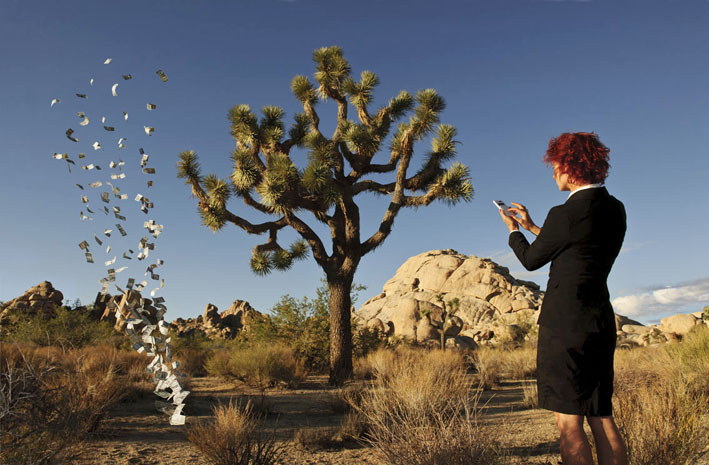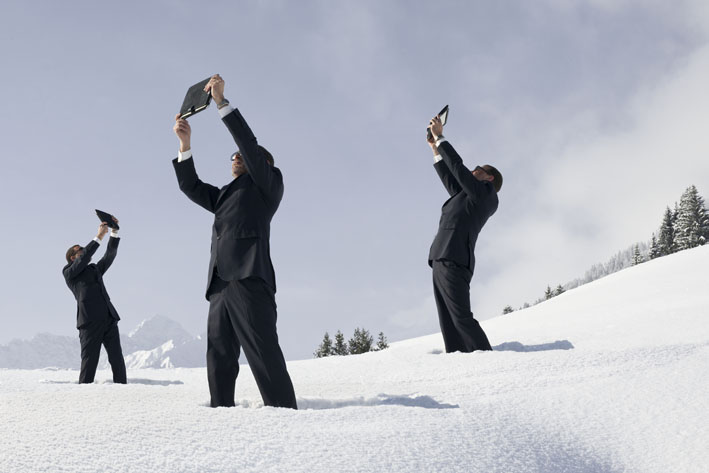
Tell us a little about the beginning of your photography career ? Struggles, etc ?
When I turned fourteen my parents gave me a camera as a birthday present. The next day, I started walking around with it and from that moment on I knew what I wanted to do with my life. Five years later, I was accepted to the Arts Academy in Utrecht and another five years later I graduated with a degree in landscape photography.
For two years, I solely photographed landscapes, had exhibitions and assignments, but something felt off. I always enjoyed photographing landscapes but at a certain moment I felt the needed to express my work on a more personal level. Landscape photography alone was not enough, not suitable to visualize emotions that have more to do with life in our modern society. I needed to open my mind and find a way to express these emotions in my work. At first I felt a bit insecure about my new ideas, so I started taking picture of myself, it was something I could do on my own. Secretly, safely. Not long after that I started using models as well, though I never stopped making self-portraits. In the end, I think it was important to be able to put more human emotions and more fantasy into the image. This didn’t happen overnight. I felt like I had to start all over again, find a new language and build up a new portfolio from scratch. It took me about five years (again) to achieve a way of expression I felt comfortable in. Now that I have, I cannot imagine living without it for that would mean to live without imagination.
What is your photographic process ?
Once I have an image in mind, the challenge starts with making it reality. Finding the right location for the idea and getting the production done, which always takes up more time than I want or expect. A lot of people ask me straight up if I create the work all through Photoshop. Although I am quite comfortable answering this question, I don’t want it to be the first thought of the photograph. I’d like people to first look at the image and then move onto the less important question (at least for this type of photography, not being journalism or documentary) of how it was conceived. The way I work is mostly a combination of good production in reality and a minimum of digital enhancement. I once moved a bed to a distant meadow for a picture, made a dress out of newspapers, a bed out of moss and created flying dollar bills with fishlines and tape. Another time I bought two fish tanks, I filled one with water and fish and the other filled with beer. I then photographed the fish through the two tanks. The only thing was: I only had seven fish and that’s what I used photoshop for. Minimalizing the digital work always gets the best results for me. Having said that, I must also say that I will never refrain from using it if I need it to get the result I want. The image and it’s quality is most important and I will create it to my wishes on way or the other.
Where do you gather inspiration for your projects, in particular your project, Urbanite ?
I think fantasy and dreams are very important, they stimulate people in many ways. We need them, especially in this digital age we’ve come to live in. Our identity seems to be drawn more from our statuses online, than who we are in actual life. As the ones and zeros pour into our lives, they also affect our thoughts. I fear that we start to think more in truths and untruths than in possibilities and seemingly impossibilities. I fear that the level of fantasy is being reduced by it . That’s why I want to embrace the freedom of the surreal within my work. Just to open up to possibilities.
I like pulling reality out of context and to visualize it in an alternate appearance. Using the absurd and the surreal is my way to offer resistance to an over regulated society and to raise questions about the identity of the individual therein. “Urbanite” is mostly about the relationship of our cultivated life with nature. Our position between the natural and the manufactured is an important theme throughout my work. I want to translate this theme into tragic yet humorous scenes. By placing individuals and objects in places where they don’t seem to belong, I try to challenge the boundaries between the real and the surreal, to invite the viewer to renew interpretations and their visual vocabulary. Which eventually, and hopefully, allows them to see more possibilities. For if we want to change anything in our life’s or society, we need to be able to see possibility. And to do that, we need fantasy.
Where do you see photography in 10 years ?
It is estimated that ten percent of all pictures ever taken were shot in the last twelve months. So I think we can safely say that photography now is more popular than ever. The tools to create and share pictures have become accessible to just about everyone. Some think that this might be threat to the profession of photography.
But I will always be convinced that a good image originates in the mind of its creator. Being a good photographer has less to do with the camera and more with the person behind it. With the rising popularity of photography in general, exceptional images will only rise higher above the ever-expanding sea of mediocrity. And since the majority of people have more experience in picture taking, I can only assume that they will also become more capable of recognizing exceptional quality. So I see a bright future for photography in all forms. Having said that I do realize that this abundance of images has made it a lot harder to achieve this level of exceptionality. As a photographer and an artist I see this as a challenge. A challenge I take up with pleasure and the necessary perseverance.
Click here to see more work by Astrid Verhoef

